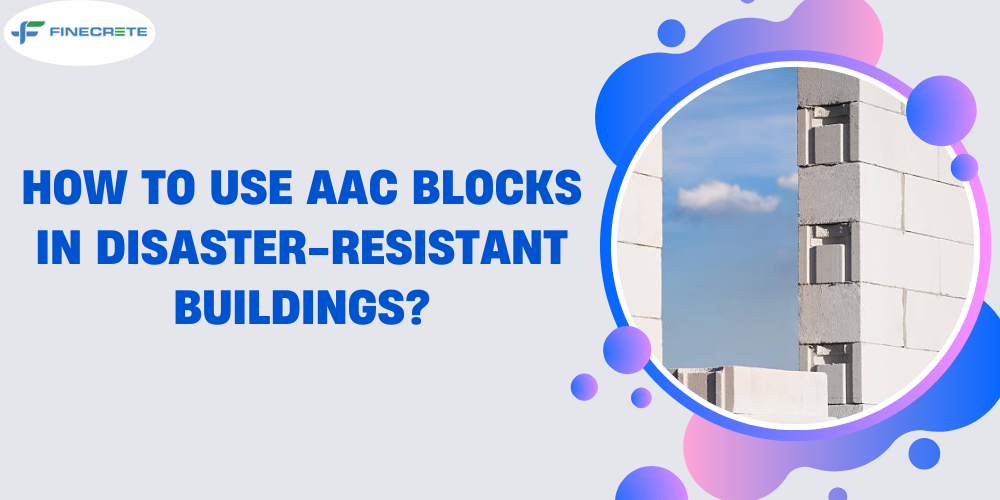In a world where natural disasters seem to be occurring with increasing frequency and intensity, the need for resilient and disaster-resistant buildings has never been more crucial. One material that has gained popularity in the construction industry for its disaster-resistant properties is AAC (Autoclaved Aerated Concrete) blocks. AAC blocks are not only lightweight but also possess excellent thermal insulation and structural strength, making them an ideal choice for disaster-resistant construction.
Find out how to use AAC blocks in disaster-resistant buildings:
- Selecting the Right AAC Blocks:
Choosing the right AAC blocks is the first step towards creating a disaster-resistant building. AAC blocks come in various grades, and it is essential to select blocks with a high compressive strength. Blocks with a higher compressive strength offer better resistance to external forces, making them more suitable for disaster-prone areas. Additionally, ensure that the AAC blocks you choose meet the required quality standards and certifications.
- Proper Foundation Design:
A solid foundation is crucial for any building, but it becomes even more critical in disaster-resistant construction. When using AAC blocks from top AAC block manufacturers in India, you should consult with a structural engineer to design a foundation that can withstand seismic activity, flooding, or other potential disasters. Proper reinforcement and anchoring are essential to ensure the stability and safety of the structure during adverse events.
- Incorporate Reinforcement:
While AAC blocks are known for their lightweight properties, reinforcing the structure is vital for disaster resistance. Incorporate steel reinforcement, such as rebar, to enhance the structural integrity of the building. Reinforcement helps the AAC block walls withstand forces like earthquakes and high winds, reducing the risk of collapse.
- Resilient Roofing and Flooring:
To create a truly disaster-resistant building, it is not enough to focus solely on the walls. Pay attention to the roofing and flooring systems as well. Opt for materials that can withstand heavy rain, wind, or even impact from falling debris. AAC roofing panels can be an excellent choice for their durability and thermal insulation properties.
- Adequate Insulation:
AAC blocks offer natural thermal insulation, which helps maintain a comfortable indoor temperature and reduces energy consumption. Proper insulation is not only beneficial for day-to-day living but also essential in disaster situations. Maintaining a stable temperature can be critical during extreme weather events. Ensure that the AAC blocks are installed correctly, with minimal gaps, to maximize insulation.
- Seismic Design Considerations:
In earthquake-prone regions, seismic design is of utmost importance. Consult with seismic engineers to assess the earthquake risk and design the structure accordingly. AAC blocks can be used effectively in seismic-resistant construction, but it is crucial to follow the recommended design and construction practices, including adequate bracing and detailing to ensure safety.
- Proper Water Management:
Flooding is a common disaster in many parts of the world. To protect your AAC block building from water damage, implement effective water management systems. This includes proper drainage systems, elevation of the building above the floodplain if applicable, and using water-resistant materials for lower levels of the structure.
It is essential to follow best practices, work with experienced professionals, and adhere to local building codes and regulations when using AAC blocks in such construction.






